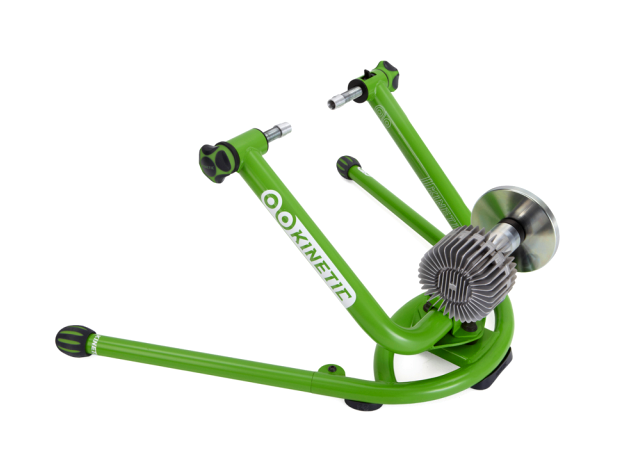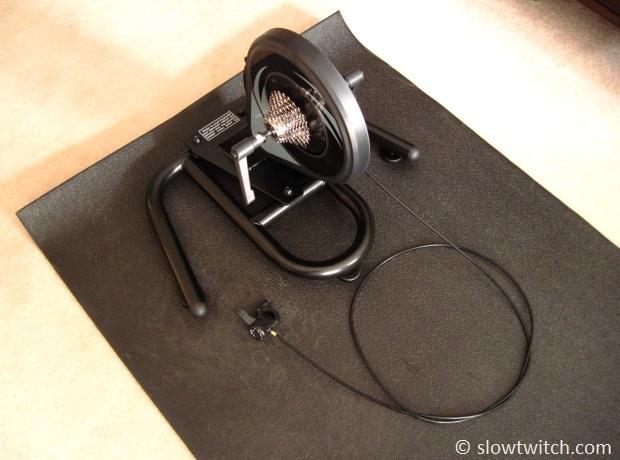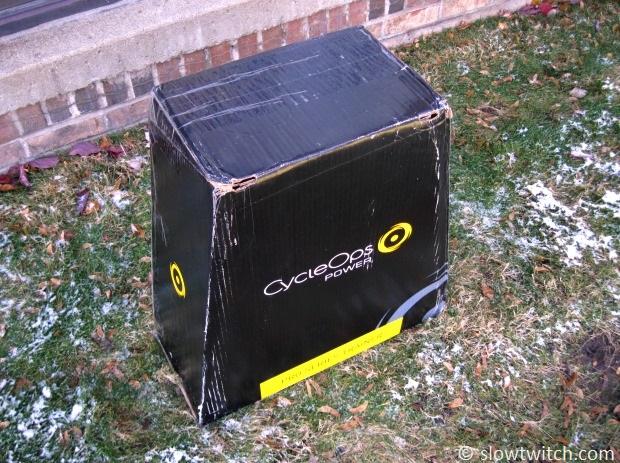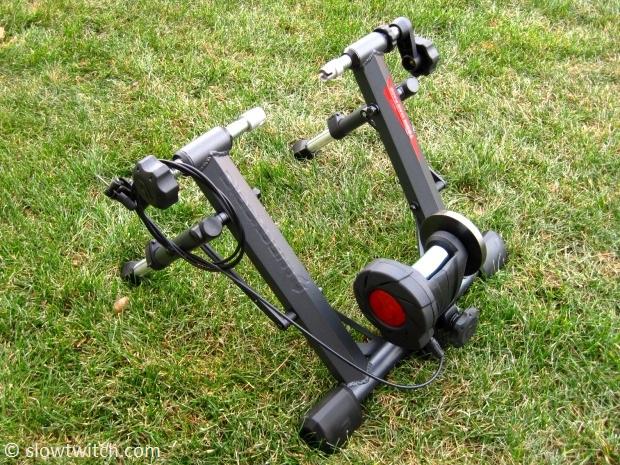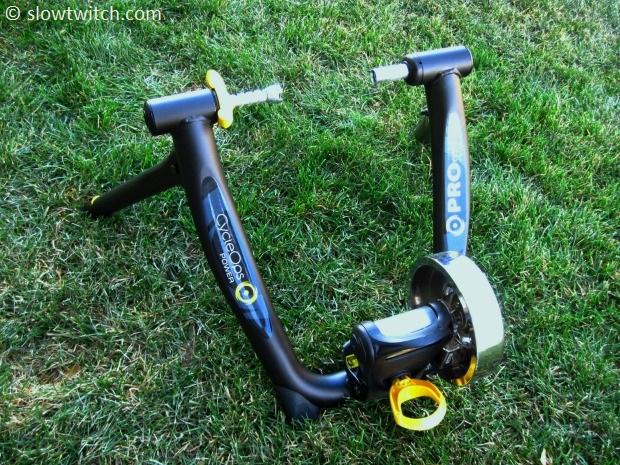Dumb Trainers
By way of explanation we call them "dumb" trainers not to disparage but to differentiate them from smart trainers. To any trainers still offended, I retract my characterization of you as dumb. You are simply unsmart.
I'm referring to standard stationary trainers. When I started bike riding and racing back in the 1970s we didn't have these; stationary training was always performed on rollers. I'm going to write about rollers elsewhere, but I'll just say that there were two major ways rollers differed from the trainers we see today. They required you, or allowed you (depending on how you look at it), to pay attention to riding a straight line. Make no mistake, riding the rollers was, and remains, the most realistic outdoor riding simulator. Nothing, to this day, beats the experience of riding rollers if what you want is a true outdoor simulation.
The other difference between rollers and today's stationary trainers is that with rollers came an upper limit to how much power you could place on the pedals. Eventually you would spin out even your tallest gear. Were you to try to add resistance to the roller mandrel you'd simply ride your bike forward off the roller or the back wheel would skid. Today's trainers attach to and fix the rear dropout in place, allowing you to produce power beyond the capacity of any rider.
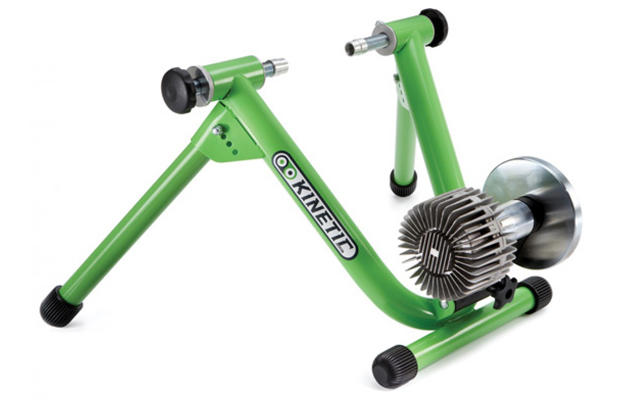
The first of the stationary trainers like those we use today used wind as the agent of resistance. The rider turned a fan. Trainers are still made this way. These trainers are a bit noisier and they lack a specific feature that fluid trainers provide.
The resistance in a fluid trainer is generated by an impeller spinning through hydraulic fluid. The benefit of this kind of trainer is that, as that impeller spins faster and faster, the resistance increases at a steeper rate than does a wind trainer as its fan spins faster and faster. This is more road-realistic. A fluid trainer presents a ride quality that is hard to beat in the world of dumb trainers. The Kurt Kinetic Road Machine is one such example and is pictured above.
There is one additional kind of resistance unit. We've heard of wind and fluid trainers, and we've also heard of mag trainers. This, for magnetic, and magnetism is the third method of resistance in trainers. The resistance unit on a mag trainer is an "eddy current brake," very large examples used in high speed trains; small ones are used in hand held power tools. A spinning object and a magnet each have opposing magnetic fields. As you move the magnet closer to that spinning conductive surface the "brake" engages.
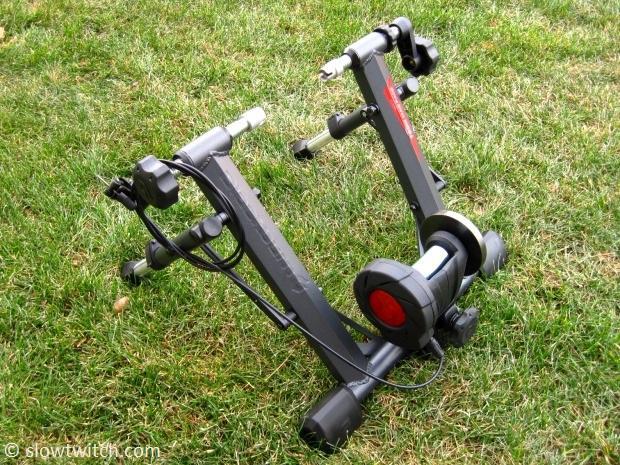
The advantage mag trainers have is that resistance is variable. Depending on the model you can either increase the resistance at the unit itself (by moving the magnet closer to the spinning conductive element) or at the handlebar if you so choose (just above is a Blackburn mag trainer with a handlebar controller). On the flip side, mag trainers do not enjoy the exponential increase in resistance as the unit's revolutions increase, as is the case with fluid trainers.
At least, they didn't until the CycleOps Magneto trainer added a wrinkle. As you pedal faster, centrifugal force pushes the magnets outward and that means, in this case, closer to the conductive element producing the opposing magnetic field. This gives the Magneto (the CycleOps Supermagneto is pictured below) that same sense of resistance increasing disproportionately higher than the unit's increase in RPM (as with fluid trainers).
Probably the two top brands, when it comes to technologies, are Kinetic and CycleOps. Kurt Kinetic used to simply be a contract manufacturer to other fluid trainer companies, but it started making its own trainers under its own name during the decade of the 2000s. This company is notable for two achievements. First, it solved the problem of leaky fluid units. The Kurt Kinetic Road Machine is the flagship of its line.
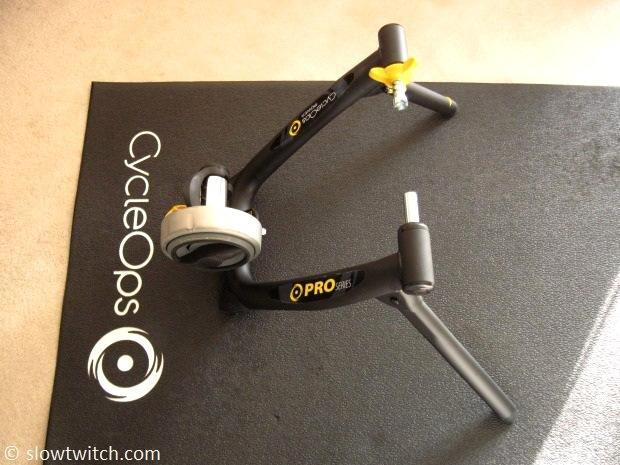
All of these stationary trainers lose a bit when compared to the road riding experience. None of them approach the sensation of riding rollers. Kurt Kinetic makes a trainer that bridges that gap somewhat. It's the Kinetic Rock and Roll, with the trainer proper sitting on a wider base with a set of elastomers between them, kind of like how a portable generator is built, to those familiar with these. The blessing and curse of the Rock and Roll is that you get to, and have to, pay a bit of attention to your riding. Balance becomes a part of the experience. This is the second notable innovation from Kurt Kinetic. The Rock and Roll is pictured below.
Features
A number of the popular trainers have been reviewed on Slowtwitch, and appending to this article, below it and below any Facebook comments that you all might write, is a list of "Articles related to this one." Click for the review of the trainer(s) you'd like to investigate further.
Just, in general I'll say that trainers vary in the quality of their resistance units, in the robustness of their frames, and in how quick (or not) and solid (or not) the attachment to the bike in two areas: how the trainer attaches to the bike at the rear dropouts; and how the resistance mandrel affixes to the rear wheel. For example, if you read our and others' reviews of both the Kurt Kinetic and CycleOps Magneto and Supermagneto trainers you'll find that the CycleOps units are quicker and slicker in mounting the bike to the trainer than the Kurt; but that the Kurt's slower and more cumbersome mounting and attachment motifs are considered by some to have a more solid feel.
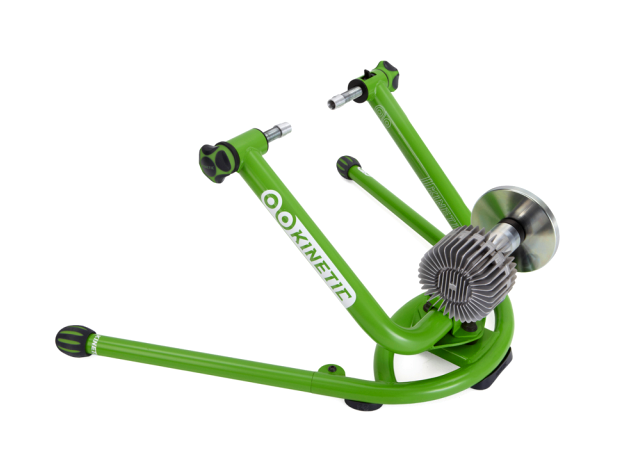
The flywheel is a part of all of these trainers, the larger the better. The problem with large flywheels is they're heavy, so they cost more to buy and to ship, and they make your trainer heavier. But they also provide you with a more road-like ride, specifically in how they resist spinning down when you coast. Standard flywheels are between 6 and 7 pounds. Kinetic's pro flywheel (you must buy it aftermarket) is 12 pounds.
About price: Some of these trainers are lesser known, but a great value, specifically the dumbest of the dumb trainers, i.e., those that aren't techie enough to have to worry about patent infringement. CycleTEK makes a large, stable, otherwise pretty standard trainer. Big mandrel, 7lb flywheel. I've got one of these and have gotten good service. Cascade makes a nice fluid trainer. Right now it's selling for $299, including riser block. It's got a 7lb flywheel and probably my favorite system for affixing the bike in the trainer, which it has patented. This trainer is pictured below.
Direct Drive Trainers
There is another way your bike can interface with your trainer, by removing your bike's rear wheel. A cassette on the trainer becomes a part of the bike's drive train. Are these better? I don't know. You don't have tire scrub to worry about, which means no smoking tires, no tire slip, no tire wear.
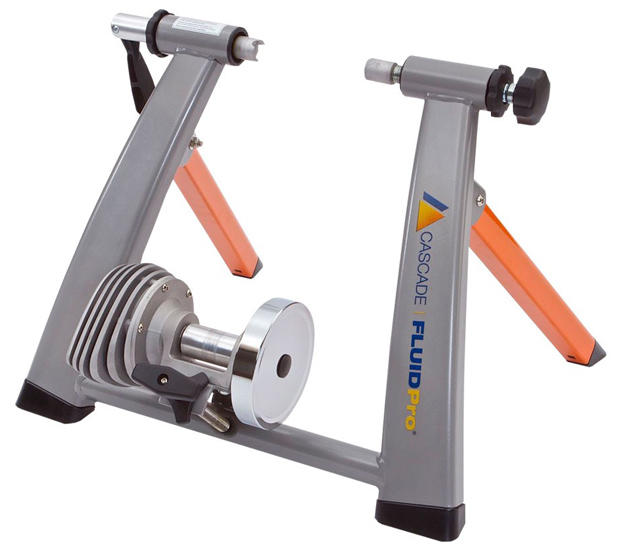
There are two notable direct drive trainers: the Lemond Revolution and the Wahoo Kickr. The Kickr should not rightly be included in this overview because it's not a dumb trainer. If you can vary the resistance of the unit from a handlebar controller electronically; if your trainer outputs a work file; if a computer can control your trainer's resistance; then it's a smart trainer and the Kickr is one of these.
But the Revolution is not a smart trainer. The Revolution (pictured below) is just a high quality, very nice, but undeniably dumb, wind trainer. Installing the aftermarket "Watt Box" to this trainer does not make it smart, it simply measures and records speed and power, and transmits them to your handlebar controller via an Ant+ signal.
[Late add: There are at least two more direct drive trainers that were not mentioned when this article originally posted 2 days ago: one is the Silencer from CycleOps. The other is the Elite Turbo Muin. Each sell for in the circa-$650 range.]
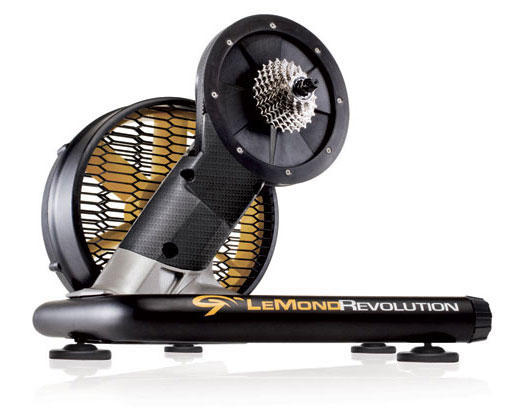
Smart Workouts on Dumb Trainers?
How do you smarten up a dumb trainer?
If you go to Amazon you'll see the "Wahoo Fitness Speed & Cadence Sensor for iPhone." That last part, the "for iPhone," is old news. This unit has both iOS and Android functionality now. Any device like this that digitizes data and transmits it to the cloud connects your dumb trainer to the greater cycling community. Sufferfest, TrainerRoad, virtual racing, all become possible.
But Wahoo's product is just the best known. Saris (CycleOps) sells a sensor like this. So does Garmin, Polar, Cateye, Topeak and a half-dozen others. Kurt Kinetic has one that attaches to its Road Machine via double-sided tape. Most of these seem to cost between $40 and $70.
We'll write about Smart trainers next, and afterward we'll write about how you interface with your trainers – what you can do, and who you can do it with. Specifically, we'll write about structured workouts and virtual racing. In many cases you don't need to upgrade to a smart trainer to engage with the "community" of basement trainers and racers, you just need a Bluetooth speed and cadence sensor.



